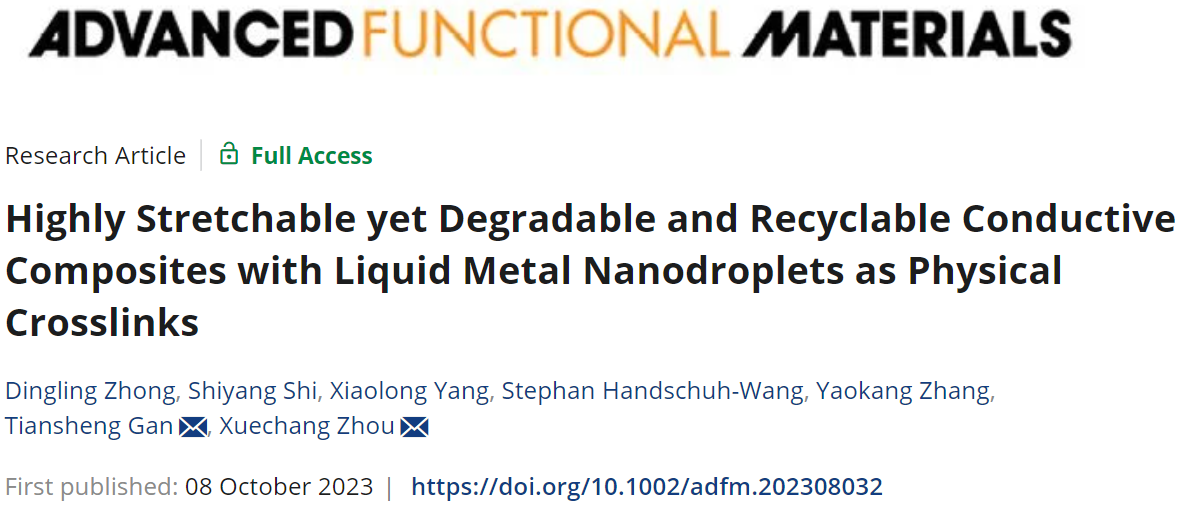Integrating conductive fillers into elastic polymer matrix is an important way to develop soft conductors. To achieve desirable conductivity and mechanical properties (e.g., stretchability and mechanical stability), a high loading of conductive fillers is generally dispersed into a permanent covalently crosslinked polymer matrix. Therefore, such conductive composites are difficult to degrade, and the recycling of conductive fillers remains a formidable challenge, leading to an increase in electronic waste and severe environmental problems.
Recently, Professor Xuechang Zhou’s research group from the College of Chemistry and Environmental Engineering, Shenzhen University, reported the research progress about the synthesis of degradable and recyclable conductive polymer composites in the journal Advanced Functional Materials. This work is entitled “Highly Stretchable yet Degradable and Recyclable Conductive Composites with Liquid Metal Nanodroplets as Physical Crosslinks”. Dingling Zhong, a postgraduate student, is the first author, and Prof. Xuechang Zhou and Dr. Tiansheng Gan are the corresponding authors.

This work reported a facile approach for the synthesis of liquid metal (LM) polymer composites with degradability, recyclability, high stretchability (1400% tensile strain), and high conductivity (1800 S/cm). In this approach, a composite hydrogel comprise a poly(2-hydroxyethyl acrylate) (PHEA) hydrogel that is physically crosslinked by LM nanodroplets as a polymer matrix and either LM microdroplets or silver microflakes as a conductive filler. A post-drying process improves the mechanical performance of the composite while creating percolating pathways via the rearrangement of the conductive fillers, imparting high electrical conductivity to the composite. Moreover, the composites are readily degraded and dissolved in aqueous alkali solutions at room temperature thanks to the reactive nature of LM crosslinks, enabling high recycling efficiency of approximately 80% and 95% for composites with LM microdroplets and silver microflakes as conductive fillers, respectively.

The authors acknowledge the National Natural Science Foundation of China, the Guangdong Basic and Applied Basic Research Foundation, and Shenzhen Science and Technology Foundation for the financial support.
Article information:
D. Zhong, S. Shi, X. Yang, S. Handschuh-Wang, Y. Zhang, T. Gan*, X. Zhou*, Highly Stretchable yet Degradable and Recyclable Conductive Composites with Liquid Metal Nanodroplets as Physical Crosslinks. Adv. Funct. Mater. 2023, 2308032.
See full text link: https://doi.org/10.1002/adfm.202308032
